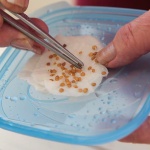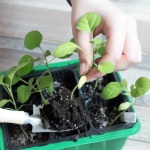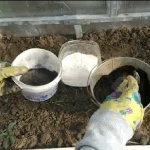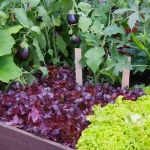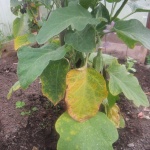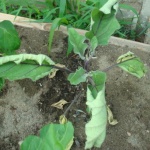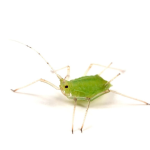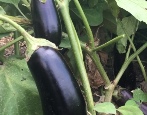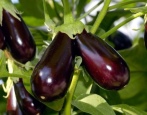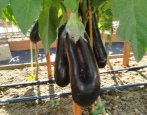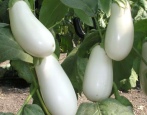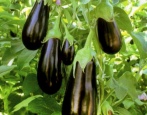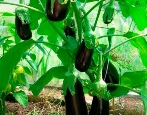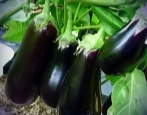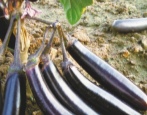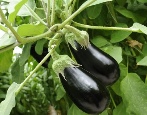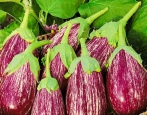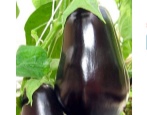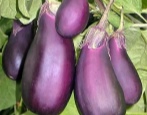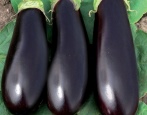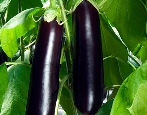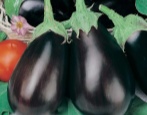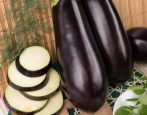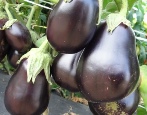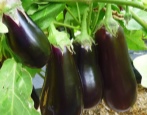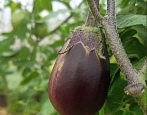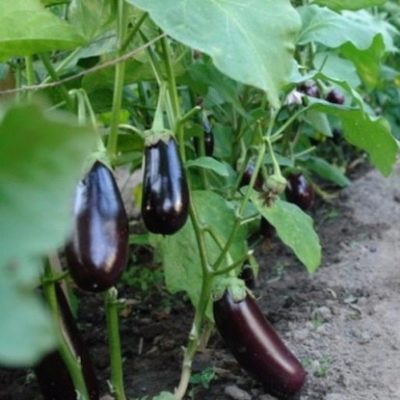
- Authors: Gavrish S.F., Kondakova O.A., Glukhov E.M.
- Year of approval: 2003
- Growth type: vigorous
- Bush height, cm: up to 120
- Fruit size: large
- Fruit shape: oval
- Fruit weight, g: 250-350
- Yield: high
- Fruit color: dark purple
- Marketability: high
Bagheera eggplant is considered one of the common hybrid varieties. The plant attracts gardeners with a variety of delicious dishes that can be prepared from the fruit, as well as its increased resistance to diseases and pests.
Description of the variety
Bagheera eggplant is a hybrid that has absorbed the best properties of the mother varieties. Specifications:
bushes - high, maximum 120 cm;
leaf plates are rather large, green, straight;
stems are powerful and sturdy, capable of bearing fruit.
The variety is suitable for growing both in greenhouses and outdoors.
Characteristics of the appearance of plants and fruits
Bagheera bushes do not take up much space, therefore they are ideal for planting in cramped conditions in small beds. As the bushes develop, they begin to form a crop. Specifications:
shape - oval, slightly elongated;
length - up to 20 cm;
weight - up to 350 g;
the skin is dense, dark purple in color.
The surface of the skin is glossy. The fruits are suitable for long-distance transportation, for which they are also appreciated by gardeners.
Purpose and taste
Tasters note the absence of bitterness in the fruit of Bagheera eggplant. The pulp has a greenish tint and medium density. Various salads and main dishes are prepared from the fruits of the plant. And also eggplants are used for freezing and preservation.
Ripening terms
Usually, the crop can be harvested already after 100-110 days from the moment the crop was planted in a greenhouse or open ground. It is worth noting that when grown in greenhouse conditions, the ripening period is reduced.
Yield
On average, up to 3 kg of ripe fruits can be obtained from a bush.
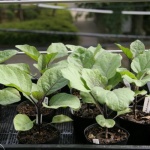
To get a tasty and bountiful eggplant crop, you must first grow strong and healthy seedlings. This culture is considered very capricious, therefore, you need to take care of seedlings when growing at home as correctly and carefully as possible.
Landing scheme
Bagheera eggplant is planted mainly by seedlings. The scheme of transplanting seedlings to the garden bed.
Leave 40 cm between the bushes in a row.
A distance of 60 cm is maintained between the rows.
The eggplant planting depth should not be less than 7 cm.
Usually, eggplants are planted in a greenhouse, but gardeners in the southern regions prefer to grow the vegetable outdoors.
Growing and care
The first planting work - planting seeds in containers - is carried out around the beginning of spring. Stages.
Selection. The seeds are placed in a glass of water for a day. Whole samples remain at the bottom, empty ones float.
Disinfection. The selected material is placed in a solution of potassium permanganate in order to increase the plant's resistance to diseases and pests.
Treatment. The seed is additionally sprayed with stimulants that accelerate growth.
Conditions for sowing seeds:
the place for installing containers with future seedlings should be warm and lit;
it is better to plant seeds in peat pots;
after planting the seeds, the land should be watered abundantly and covered with gauze or translucent glass to create a greenhouse effect;
the soil should be loose and moderately moist.
Do not plant seeds in too wet soil, otherwise the plant will rot and die.
Towards the end of May or the beginning of June, they begin to transplant seedlings into open ground or a greenhouse. After disembarkation, it remains to take care of the care.
Watering. Eggplant does not need a lot of water. It is enough to add moisture when the soil becomes dry.
Top dressing.Usually, organic compounds or mineral complexes are used as fertilizers, which are introduced during the period of growth, flowering and fruiting.
Loosening and weeding. Necessarily carried out after each watering. They help prevent the spread of diseases and pests, and also accelerate the flow of oxygen and nutrients to the roots.
In addition, gardeners advise shaping the bushes - this is a mandatory procedure for Bagheera. To do this, it is recommended to cut off affected or too long branches before flowering.
Otherwise, the plant will waste energy on the formation of new stems and existing old, too long branches. Forming allows you to give the crown of the eggplant the desired shape, as well as facilitate the collection of fruits.
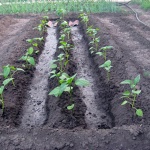
Planting eggplant is one of the most important stages in growing. When choosing a place for eggplants on your site, it is important to remember that this culture should be in warm soil, constantly illuminated by the sun. The plant is also very fond of spacious, open spaces, since its roots can grow over sufficient areas.


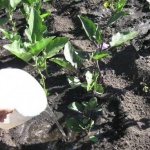
Disease and pest resistance
Based on the name, it is easy to guess that Bagheera is a resistant hybrid to various unpleasant conditions in the form of temperature changes, attacks of diseases and insects. Bushes are often exposed to various rot, the detection of which requires the prompt removal of the affected stems or leaves.
Among the common pests, slugs are worth noting. To prevent their reproduction with the subsequent destruction of the eggplant, it is better to use a specialized tool.
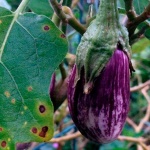
Eggplant is one of the most demanding crops. For its successful cultivation, it is necessary to create optimal conditions, as well as to carry out prevention and fight against diseases and pests. Eggplant often infects both fungal and viral diseases. If treatment is not started on time, you can completely lose the crop.
Review overview
Gardeners in Bagheera eggplants are attracted primarily by high yields. Compact bushes produce a large number of fruits with a fragrant smell and pleasant taste. Additional properties:
lack of bitterness in fruits;
possibility of transportation;
strong immunity.
If you approach the planting of a crop correctly, as well as take care of the care of the plant, it will be possible to obtain increased yields.
